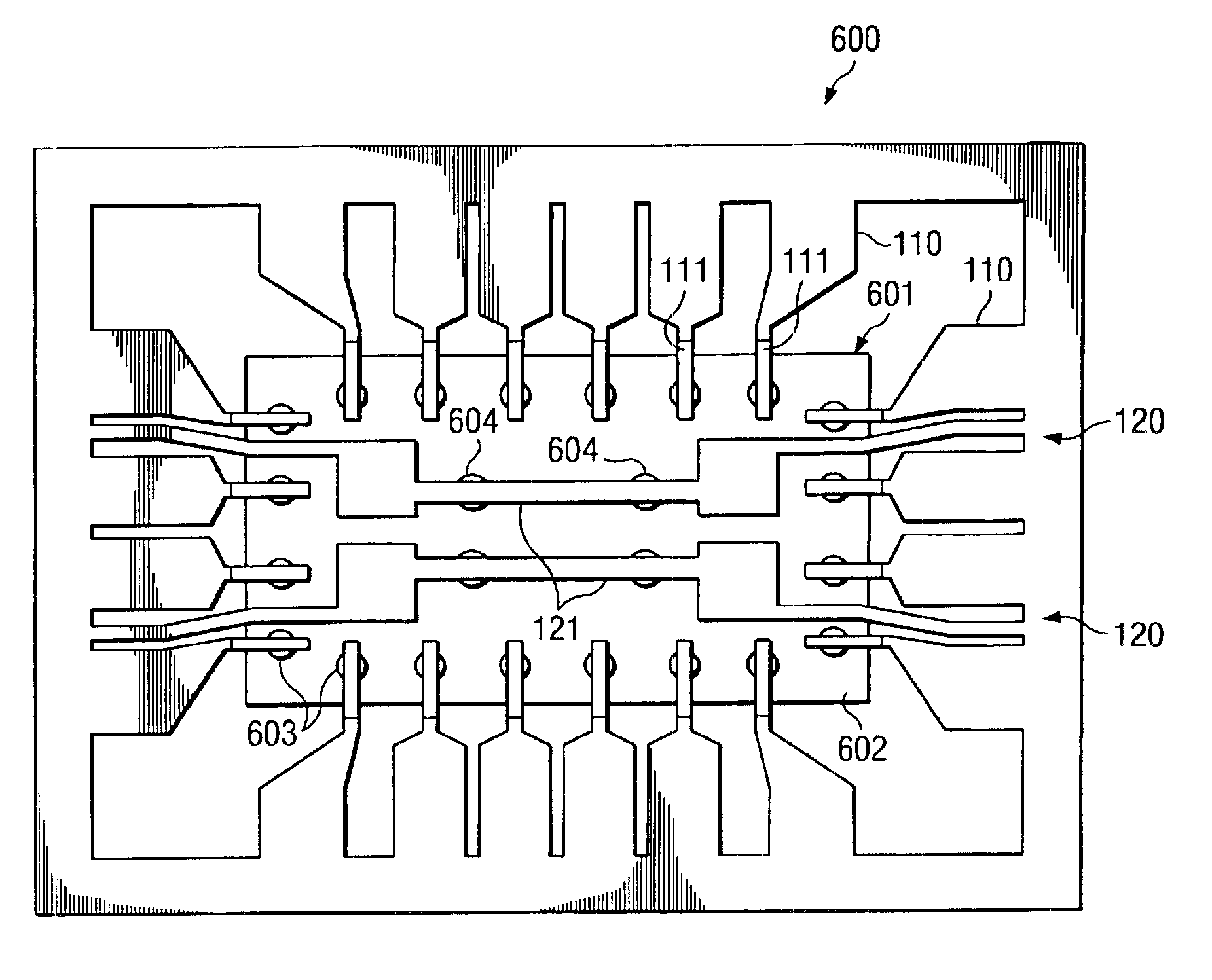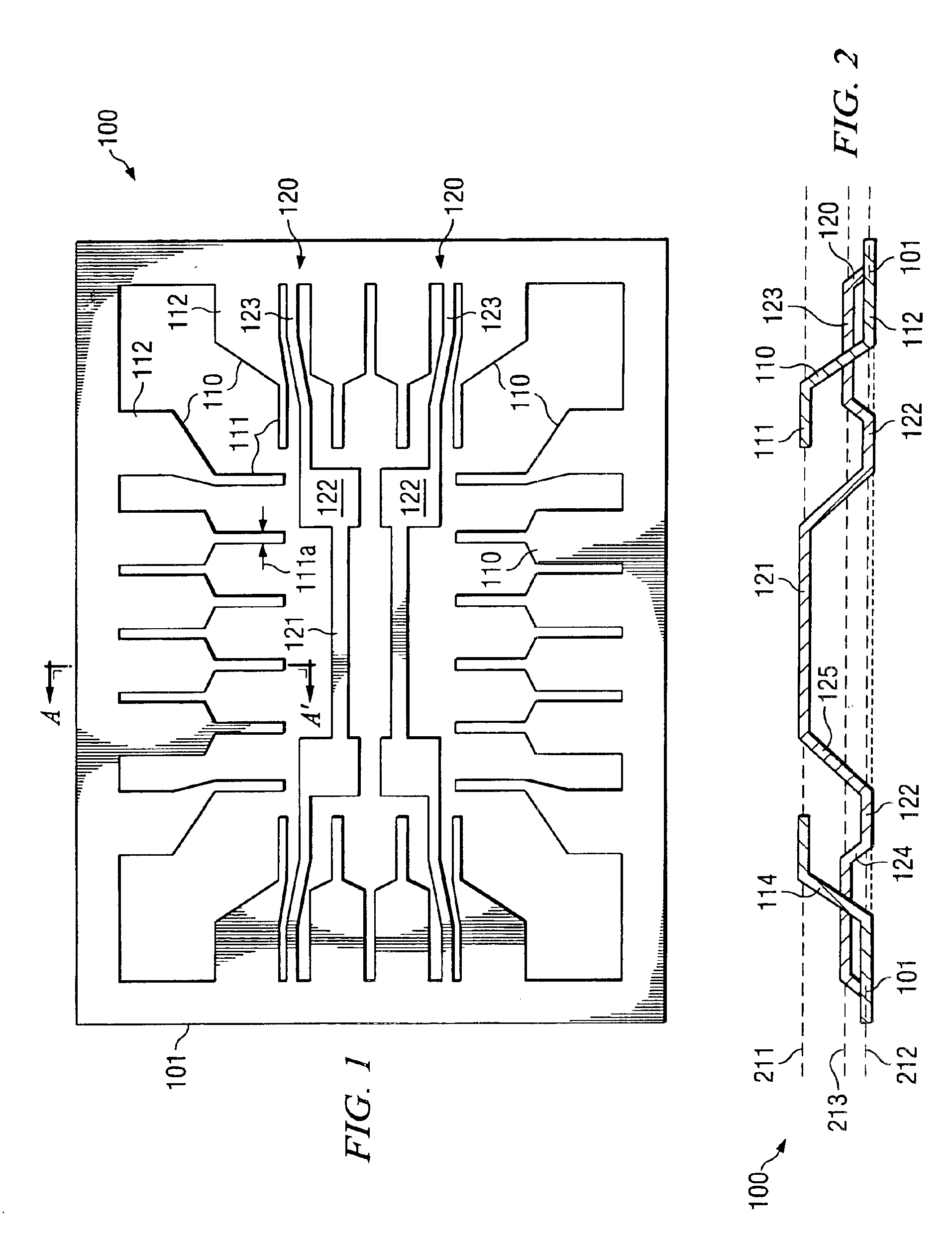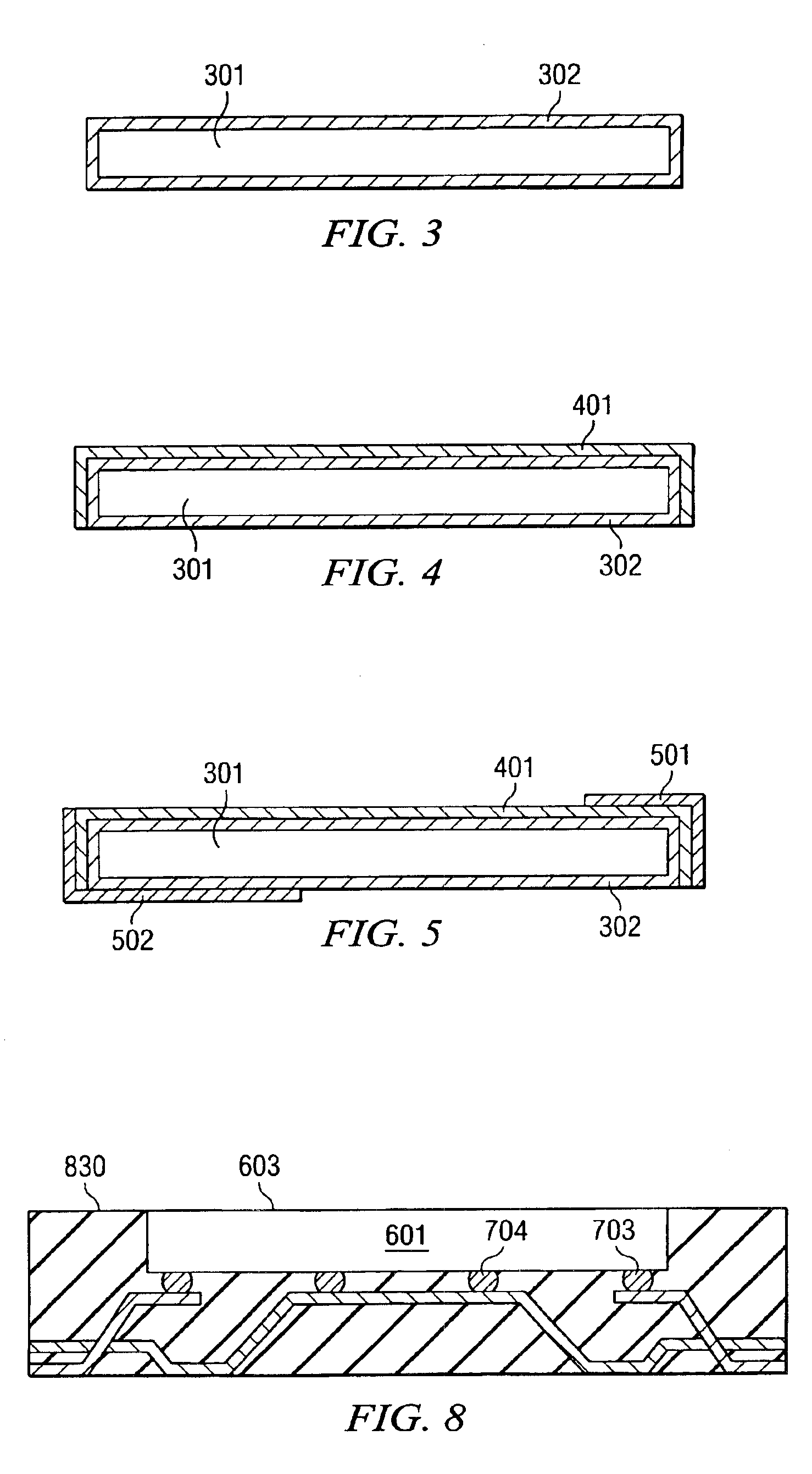Three-level leadframe for no-lead packages
a leadframe and no-lead technology, applied in the direction of semiconductor devices, semiconductor/solid-state device details, electrical apparatus, etc., can solve the problems of high cost and no-lead package based on wire bonding technology
- Summary
- Abstract
- Description
- Claims
- Application Information
AI Technical Summary
Benefits of technology
Problems solved by technology
Method used
Image
Examples
Embodiment Construction
[0020]The present invention is related to U.S. Pat. No. 6,072,230, issued on Jun. 6, 2000 (Carter et al., “Exposed Leadframe for Semiconductor Packages and Bend Forming Method of Fabrication”), and U.S. patent application Ser. No. 09 / 900,080, filed on Jul. 6, 2001 (Abbott et al., “Preplating of Semiconductor Small Outline No-Lead Leadframes”), and Ser. No. 10 / 346,899, filed on Jan. 17, 2003 (Abbott, “Semiconductor Device with Double Nickel-Plated Leadframe”).
[0021]FIG. 1 is a schematic and simplified top view of a leadframe, generally designated 100, for use in the assembly of semiconductor chips; FIG. 2 is a schematic x-ray view of leadframe 100 after the forming step. FIGS. 1 and 2 illustrate two pluralities of leadframe segments, held together by frame 101. Several segments of the first plurality are designated 110, and several segments of the second plurality are designated 120.
[0022]Each segment 110 of the first plurality has a narrow end portion 111 in a first horizontal plane...
PUM
 Login to View More
Login to View More Abstract
Description
Claims
Application Information
 Login to View More
Login to View More - R&D
- Intellectual Property
- Life Sciences
- Materials
- Tech Scout
- Unparalleled Data Quality
- Higher Quality Content
- 60% Fewer Hallucinations
Browse by: Latest US Patents, China's latest patents, Technical Efficacy Thesaurus, Application Domain, Technology Topic, Popular Technical Reports.
© 2025 PatSnap. All rights reserved.Legal|Privacy policy|Modern Slavery Act Transparency Statement|Sitemap|About US| Contact US: help@patsnap.com



